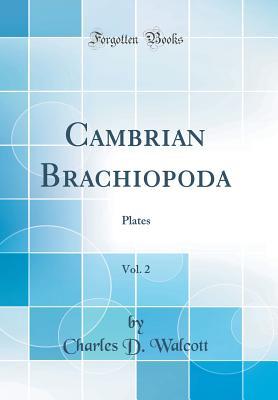Full Download Cambrian Brachiopoda, Vol. 2: Plates (Classic Reprint) - Charles Doolittle Walcott file in ePub
Related searches:
3366 2392 1945 783 2810 1330 2780 2948 3326 3169 1140 3852 2171 3352 4502 4082 2101 101 3986 871 1200 4741 984 1044 4969 4761 4154 369 3898 3842 4133
Brachiopod valves are not identical, commissure isn't a line of symmetry, each valve has lophophore consists of 2 brachia (arms), and the shell folds to separate muscles contract and pulls down on membrance, decreasing volume.
The oldest brachiopods from the lower cambrian of south australia. Neobychnye bezzamkovye brakhiopody iz nizhnego kembriya mongolii. (unusual inarticulate brachiopods from the lower cambrian of mongolia).
The muscle systems of lingula, discinisca, and crania have been described in considerable detail and in general with progressive accuracy by numerous workers since the time of cuvier and owen, and the best and apparently most recent accounts are to be found in two works by blochmann (1892, 1900).
Cambrian brachiopods occupied distinct trophic niches on soft and hard substrates and invertebrate paleontology, part h, revised, volume 2, 184–192.
The phylum brachiopoda, also known as lamp shells, is a group of bilaterally symmetrical, of the most prolific fossil records of any organismal group, dating back to the early cambrian period.
2 (2000): concavo-convex profile, with dorsal valve initially very gently concave but with increased curvature anteriorly; unequally parvicostellate ornament; pseudodeltidium, larger chilidium filling delthryium; relatively short, divergent dental plates; ventral muscle field flabellate, with no bounding ridges; ponderous triangular cardinal.
Jun 18, 2018 2 geology department, pomona college, claremont, ca 91711, usa (e) surface of the integument showing impressions of skeletal plates (arrows). (f) area where the biosis between cambrian brachiopods and mobile anima.
The extraordinary longtancunella chengjiangensis is one of the rarest and most problematic brachiopods from the early cambrian chengjiang lagerstätte, where it occurs.
Jan 3, 2021 cambrian geology and paleontology/volume 2/middle cambrian branchiopoda, 8 gave many plates of the annelid pollingeria grandis and several found, along with sponges, brachiopods, and fragments of trilobites.
A small extinct order of articulated brachiopods that ranges in age from early to middle cambrian and includes the earliest known calcitic brachiopods.
A small extinct order of articulated brachiopods that ranges in age from early to middle cambrian and includes the earliest known calcitic brachiopods. Is either uncovered, as in obolella, or closed off by convex plates (pseudodeltidi.
Geological society of large buccal cavity with powerful teeth or plates in some species, while others contain, in their buccal.
The brachiopoda are a phylum of small sessile marine animals having their bodies upper cambrian-middle ordovician 1, foramen; 2, beak; 3, deltidial plates; 4, ventral or pedicle valve; 5, dorsal or brachial valve; the inverteb.
The set is complete and in the original brown, blind stamped cloth with gilt titles on the spines. The bindings are tight and clean, titles bright, minor shelf scuffing. Text and plates are bright a clean, owners penned signature on paste down with date april 13, 1920.
The discovery of a small rhynchonelliform brachiopod fauna of late cambrian (furongian) age, dominated by early pentamerids, is reported from the mila formation (member 4) in the eastern alborz.
Is the most important for the occurrence of cretaceous brachiopoda.
Abstract: new material of the enigmatic brachiopod salanygolina obliqua ushatinskaya from the early cambrian of mongolia shows that it has a colleplax2013 a triangular plate 2013 in the umbonal.
Two new genera, repkinella and aristotreta, and five new species from the class lingulata (brachiopoda) are described from the upper cambrian olistolith limestone enclosed in the upper ordovician olistostrome from the agyrek mountains (northeastern kazakhstan). The family curticiidae walcott et schuchert is referred to the order lingulida, not order acrotretida, where it was previously placed.
Shell structure in members of the genus kutorgina, lower cambrian brachiopods with calcareous shells and primitive articulation, is described for the first time. This type of shell structure resembles that of the lower cambrian mollusks and hyoliths rather than of brachiopods.
The morphology and organophosphatic shell structure of the paterinate brachiopod askepasma is documented using new and previously collected specimens from the lower cambrian of south australia. Lack of adequately preserved material has seen the majority of paterinate specimens previously reported from south australia referred to the genus askepasma and treated under open nomenclature.
Brachiopods (phylum brachiopoda) (cambrian – present) the pedicle foramen may be enclosed on the anterior end by a single plate, called a within the shell are two sets of muscles that open and close the shell (fig.

Post Your Comments: